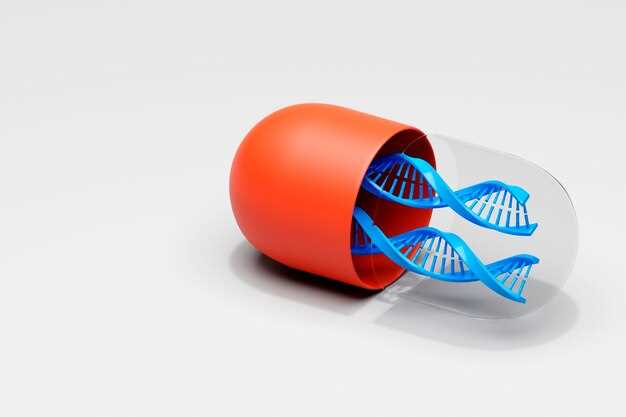
Losartan is a popular medication used to treat hypertension and certain kidney conditions. But did you know that it also shows promise in the treatment of Duchenne muscular dystrophy (DMD)?
DMD is a genetic disorder characterized by muscle weakness and degeneration. Research has shown that Losartan may help slow down the progression of muscle damage in individuals with DMD.
Join us as we explore the latest research and developments in using Losartan for the management of DMD. Stay informed and empowered in your journey towards better health.
Overview of Losartan
Losartan is a medication commonly used to treat high blood pressure and various cardiovascular conditions. It belongs to a class of drugs known as angiotensin II receptor blockers (ARBs) and works by blocking the action of a hormone called angiotensin II, which constricts blood vessels and raises blood pressure.
Losartan is also known for its potential benefits in treating Duchenne muscular dystrophy (DMD). Studies have shown that Losartan can help improve muscle function and reduce the development of fibrosis in DMD patients.
How does Losartan impact DMD?
Losartan has been found to inhibit the transforming growth factor-beta (TGF-β) pathway, which plays a crucial role in the progression of muscle degeneration and fibrosis in DMD. By blocking this pathway, Losartan can potentially slow down the disease’s progression and improve quality of life for DMD patients.
| Benefits of Losartan for DMD: |
| – Improved muscle function |
| – Reduction in fibrosis development |
| – Potential to slow down disease progression |
Impact on DMD

Losartan has shown promising results in the treatment of Duchenne muscular dystrophy (DMD) due to its ability to target fibrosis and inflammation, two key factors in the progression of the disease.
Reduced Fibrosis Development
One of the main benefits of Losartan in DMD is its ability to reduce the development of fibrosis in muscle tissue. Fibrosis is the excessive formation of connective tissue that impairs muscle function and leads to muscle weakness. By inhibiting the TGF-beta pathway, Losartan can help prevent fibrosis formation and preserve muscle integrity.
Improved Muscle Function
Losartan has been shown to improve muscle function in patients with DMD by reducing muscle inflammation and promoting muscle regeneration. By targeting the underlying mechanisms of muscle degeneration, Losartan can help maintain muscle strength and function in individuals with DMD.
| Benefits of Losartan in DMD: |
|---|
| Reduction in fibrosis development |
| Improved muscle function |
Benefits
Losartan has shown remarkable benefits in improving muscle function in individuals with Duchenne Muscular Dystrophy (DMD). Research studies have demonstrated that Losartan helps in enhancing muscle strength, reducing muscle degradation, and promoting overall muscle health.
By targeting certain pathways involved in muscle degeneration, Losartan can lead to increased muscle mass and improved muscle performance. This can result in enhanced mobility, better quality of life, and increased independence for individuals living with DMD.
Furthermore, Losartan has the potential to slow down disease progression, delay the onset of muscle weakness, and improve overall muscle function. This can be especially significant in managing the symptoms of DMD and improving the prognosis for individuals affected by this condition.
Improvement in muscle function

Losartan is known for its ability to improve muscle function in patients with Duchenne Muscular Dystrophy (DMD). Clinical studies have shown that Losartan can help enhance muscle strength and overall motor function in individuals with DMD.
| Increased Muscle Strength | Losartan has been linked to increased muscle strength, allowing patients with DMD to perform daily activities more effectively and with less effort. |
| Enhanced Motor Function | Patients taking Losartan have reported improvements in motor function, including better coordination and mobility, leading to an overall increase in quality of life. |
| Improved Muscle Endurance | Studies have suggested that Losartan may help improve muscle endurance, enabling patients with DMD to engage in physical activities for longer durations without experiencing excessive fatigue. |
With its positive impact on muscle function, Losartan has become a promising treatment option for individuals with DMD, offering the potential for improved strength, mobility, and quality of life.
Reduction in fibrosis development
Losartan has been shown to reduce the development of fibrosis in patients with Duchenne muscular dystrophy (DMD).
Fibrosis is the formation of excess fibrous connective tissue in muscles, which can lead to muscle stiffness and weakness in DMD patients. Losartan helps to inhibit the signaling pathways that promote fibrosis, slowing down its progression.
By reducing fibrosis development, Losartan can improve muscle function and mobility in DMD patients, leading to a better quality of life and potentially slowing down the progression of the disease.
Administration
Losartan is typically administered orally in tablet form. It is important to follow the prescribed dosage instructions provided by your healthcare provider. The tablets should be taken with a full glass of water, with or without food, as directed by your doctor.
Dosage Guidelines
The dosage of Losartan will vary depending on the individual’s condition and response to the medication. It is important to follow the recommended dosage schedule provided by your healthcare provider. Do not adjust the dosage or stop taking the medication without consulting your doctor.
| Strength | Dosage | Frequency |
|---|---|---|
| 25 mg | 1 tablet | Once daily |
| 50 mg | 1 tablet | Once daily |
| 100 mg | 1 tablet | Once daily |
It is important to take Losartan regularly to get the most benefit from it. If you miss a dose, take it as soon as you remember. However, if it is almost time for your next dose, skip the missed dose and continue with your regular dosing schedule.
Dosage guidelines
The recommended dosage of Losartan for the treatment of DMD is determined by the patient’s weight and age.
For children: The usual starting dose is 0.4 mg/kg once daily, which may be increased to 0.8 mg/kg once daily based on the individual’s response.
For adults: The typical starting dose is 50 mg once daily, with a maximum recommended dose of 100 mg once daily.
It is essential to follow the prescribed dosage and frequency as directed by a healthcare professional. Do not adjust the dosage without consulting a doctor.
Timing and frequency
When it comes to the timing and frequency of administration, it is crucial to follow the prescribed guidelines set by healthcare professionals. Losartan should ideally be taken at the same time each day to maintain consistent levels in the body.
The dosage frequency for Losartan may vary depending on the individual’s condition and response to treatment. It is typically taken once or twice daily with or without food. It is important not to skip doses and to take the medication as directed by your healthcare provider.
If you miss a dose, take it as soon as you remember unless it is almost time for the next scheduled dose. In that case, skip the missed dose and continue with your regular dosing schedule. Do not double up on doses to make up for a missed one.
Regular use of Losartan at the prescribed timing and frequency can help maintain its effectiveness in managing DMD and improving muscle function over time.
